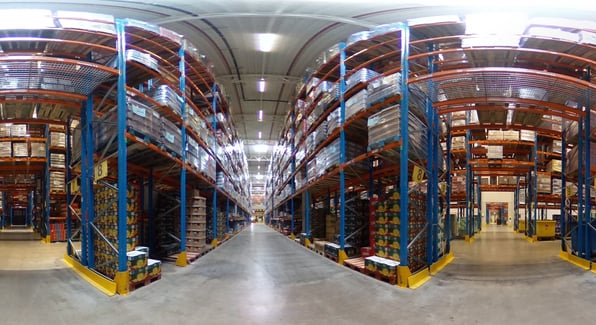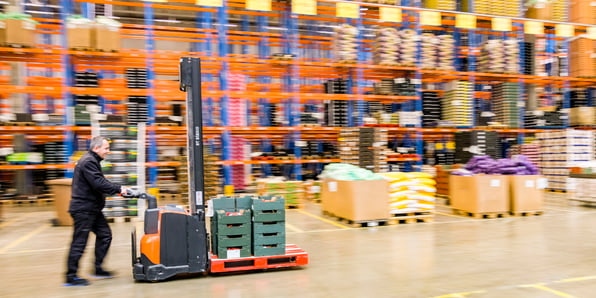2 min read
Imagine you are in the middle of a warehouse, surrounded by an abundance of boxes and pallets. All around you, orders are being picked and need to be delivered. To ensure that everything runs smoothly, the logistics processes in your company must run optimally. This is the only way to reduce costs, improve service and ultimately increase customer satisfaction. At this moment, you are surely asking yourself the question: "How can I optimize my warehouse logistics?"
Warehouse optimization aims to improve the various logistical processes within a warehouse. From goods receipt to storage and picking to goods issue, all steps must run smoothly. The main goal is to minimize any kind of waste, be it space, time or resources.
How to optimize your logistics with lean management
But how do you achieve effective warehouse optimization? This is where the principle of lean management comes in. Lean management, originally developed by Toyota in the automotive industry, aims to make all of a company's processes, including logistics, as efficient as possible.
What exactly is meant by lean management in logistics?
Lean management means eliminating waste, striving for continuous improvement, and maximizing value for the customer. The focus is on five fundamental principles:
-
Define values from the customer's point of view: In warehouse optimization, it is critical to understand exactly what your customer actually needs. A deeper understanding of customer needs enables you to design processes and services that deliver real value to customers. This may mean providing the right amount of product at the right time to avoid delivery delays, or ensuring a seamless return process to increase customer satisfaction.
-
Identify value streams: Value stream mapping is an important tool in lean management. It allows you to visualize the flow of work through your processes and understand how product information and physical products flow through your warehouse. This allows you to identify bottlenecks that can lead to waste, such as unnecessary movement or overproduction.
-
Create Flow: Once you have identified your value streams, the goal is to create a smooth, continuous flow. In a warehouse, this means eliminating delays and blockages in processes. This can be achieved through improved layouts, more efficient workflows or the use of automation.
-
Apply the pull principle: The pull principle in lean management refers to producing what is actually needed instead of producing to stock. In the warehouse context, this means that only those products that are really needed should be ordered and stored in order to reduce inventory costs and avoid overstocking.
-
Aim for improvement: The final principle of lean management is to constantly seek opportunities for improvement. In warehouse logistics, this means always looking for ways to increase efficiency, improve productivity and increase customer satisfaction. This can be achieved by regularly reviewing and adjusting processes, training employees or implementing technology.
The quest for improvement never ends. It requires commitment, dedication and a continuous improvement approach. But the road to perfection doesn't have to be intimidating. With the right partners and tools at your side, you can successfully master the journey.
Your path to optimized warehouse logistics with METRO LOGISTICS
When you're ready to embark on this journey, it's time to take your logistics to the next level. With METRO LOGISTICS, you have a reliable partner who supports you with decades of experience and comprehensive expertise. We offer you not only strategic advice, but also concrete solutions to optimize your logistics processes. Our proven system of warehouse logistics is based on the application of lean management principles. With this approach, we ensure that your warehouse is optimally utilized, waste is minimized and your customer satisfaction is always at the forefront.
Let us work together to develop a plan to take your warehouse processes to the next level. We look forward to hearing from you and optimizing your logistics processes together!




